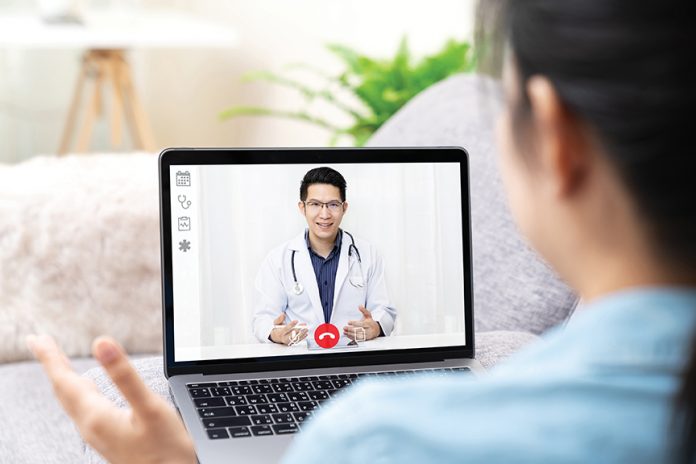
As the number of COVID-19 cases continues to mount, many Americans may be considering where to go for care if they develop potential symptoms. One important — yet potentially overlooked — resource is telehealth, which may enable people to connect 24/7 with a health care provider via a digital device and avoid potential exposure risks associated with in-person trips to health care facilities.
Telehealth may be especially helpful as an initial option for medical advice related to COVID-19 and to help evaluate other possible health issues, as well as to assist the 20% of the U.S. population that lives in rural areas. To help people more effectively take advantage of this technology during the evolving COVID-19 situation, here are three tips to consider:
Identify Available Resources: To find telehealth resources, check with your care provider group, health benefit plan or employer. Nearly nine out of 10 employers offer telehealth visits to their employees, as do many Medicare and Medicaid health plans (in some cases by telephone), and 76% of hospitals connect patients and care providers using video or other technology. In some cases, people can access telehealth visits without cost-sharing. Since the outbreak emerged, some health plans are now encouraging patients to use the telephone or live videoconferencing (if available) to connect people with local network medical providers, waiving all cost-sharing for COVID-19 related visits. This is especially important for people with certain complex conditions, such as diabetes or Parkinson’s disease, as it may enable them to “see” their own physician for acute or follow-up care related to their condition and help avoid potential exposure to the coronavirus during an in-person visit.
Understand Likely Next Steps: During a telehealth visit, care providers can give general medical advice to evaluate possible COVID-19 symptoms (fever, dry cough or difficulty breathing). While diagnostic testing services are not available through a telehealth visit to confirm a diagnosis for COVID-19 (if needed), care providers can help guide patients to a local care provider or public health authority for testing and follow-up care. Making these connections may help people take the appropriate steps in advance of an in-person test, which may help reduce the risk of exposure and possible exposure to other patients and health care providers. For other illnesses (not COVID-19 related) that are treatable with medications, telehealthcare providers can write prescriptions and discuss how to obtain them safely, such as using medication home delivery or drive-thru pick up at a local pharmacy. Due to the COVID-19 situation, it is important to note that people may anticipate potential wait times, as some care providers offering telehealth may be currently experiencing a surge in appointments.
Access Other Health Services: While elective health care procedures may be delayed to help enable care providers to focus on COVID-19 cases, telehealth may help people more effectively manage other health issues without the need to go out and risk potential exposure to the virus. Telehealth can help address myriad medical issues, including allergies, pinkeye, fevers, rashes and the regular flu. In addition, so much time at home can also contribute to behavioral health issues, so people should consider telehealth as a resource to connect with a qualified psychiatrist or psychologist. Importantly, people who experience a significant or serious medical issue should go to the emergency room (ER).
By considering these tips, Americans may be able to more effectively use telehealth resources to help stay safe during these challenging times.
About the author: Dr. Anne Boland Docimo is chief medical officer (CMO) of UnitedHealthcare, responsible for the clinical, cost and experience outcomes of more than 50 million members in UnitedHealthcare’s Commercial, Medicare and Medicaid health plans. As CMO, Dr. Docimo works diligently with both internal and external stakeholders to develop and implement clinical strategies and programs to improve the overall health care system and help us deliver on our mission of making the health care system work better for everyone.














